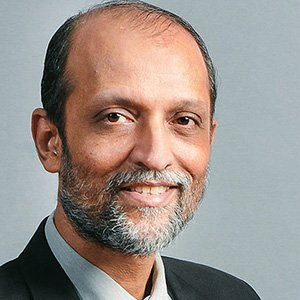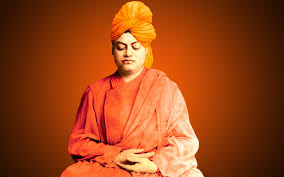Vivekananda’s teachings have something for everyone — leftists, rightists, atheists and rationalists — and their most important aspect is compassion for fellow beings.
By Ajit Ranade
 Friday, January 12, was the 155th birth anniversary of Swami Vivekananda. He adopted this name just before embarking on an epic journey to the United States, to attend the first World’s Parliament of Religions in 1893. His opening speech at that Chicago conference was made on September 11. Its main message was that of tolerance, or rather acceptance, of all religions. He said that the bell that tolled to mark the beginning of that historic conference was like a death knell for sectarianism, fanaticism and bigotry.
Friday, January 12, was the 155th birth anniversary of Swami Vivekananda. He adopted this name just before embarking on an epic journey to the United States, to attend the first World’s Parliament of Religions in 1893. His opening speech at that Chicago conference was made on September 11. Its main message was that of tolerance, or rather acceptance, of all religions. He said that the bell that tolled to mark the beginning of that historic conference was like a death knell for sectarianism, fanaticism and bigotry.
Much of what we know about Vivekananda was from his very public last nine years of life, from ages 30 through 39. Of these, almost five years were spent in North America, Europe and elsewhere. He was a candle that burnt at both ends (and hence burnt out too soon). Despite the short span of nine years, his influence on modern India is immense and subtle, and his birthday is celebrated as National Youth Day. Since he died a young man, it is impossible to think of him as an elderly, wise and white-haired monk. This was a very young sadhu.
He founded a monks’ order at the Ramakrishna Mission, in the name of his guru. Its motto is service to humanity, and it has been active all over the world for more than 120 years. This idea of a religious order based on service to fellow human beings,
This combination of the sacred and the secular through the motto of ‘SEWA’ to others is one of Vivekananda’s central messages. He once famously said, “So long as millions live in hunger and ignorance, I hold every person a traitor who, having been educated at their expense, pays not the least heed to them”. Mohan Das Gandhi, too, echoed a similar sentiment, when he said that all government policies should be guided by the objective of uplifting the last person, the least well-off in society. In a historic speech in the Constituent Assembly in 1949, Dr Babasaheb Ambedkar, too, said that we have to address the problem of widening socioeconomic inequality. Otherwise the very edifice of democracy would be blown away. Much later, President Barack Obama, and more recently, President Xi Jinping, coined the slogan “nobody should be left behind”, which implies a focus on those who are at the bottom of the social strata. In many ways Vivekananda’s thoughts, expressed forcefully in his time, have influenced thinking about welfare economics.
Earlier, in 1892, as a no-name wandering monk before his American voyage, Vivekananda was a guest at the house of Lokmanya Tilak in Pune. He stayed for a few days, but the two could converse only in the evenings, over supper. Those conversations, too, must have had an impact on Tilak, for later, when he was in jail in Mandalay, he wrote a treatise on the Gita, called the Gita Rahasya (the secret of Gita). In it, Tilak stressed the karma yoga aspect, i.e. the yoga of action (and not renunciation), and the yoga of service to others. The connection of Tilak’s thoughts and articulation to Vivekananda may sound tenuous to the sceptic, but the swami’s influence was accepted later by Tilak himself.
Vivekananda also had a strong influence on many Westerners, some of whom became his devout disciples. The most well-known of these was the Irish woman Margaret Noble, who took the name of Sister Nivedita, and was involved in India’s freedom struggle. While in America, a chance meeting with the oil magnate John D Rockefeller left a lasting impression on the latter, leading to much philanthropic activity of the Rockefeller Foundation. Another chance meeting was with Jamsetji Tata aboard a ship, and a conversation with the swami inspired Tata to fund education and research institutes in India. The Tata Institute (later called IISc) in Bengaluru owes its founding to that inspiring conversation.
The breadth and depth of Vivekananda’s thought is vast, and can be bewildering at first glance. For instance, he said, “You can be closer to God by playing football rather than reading the Gita.” Or, “You cannot believe in God until you believe in yourself.” His teachings have something for everyone – leftists, rightists, atheists and rationalists. His life was his message, and its most important aspect was tremendous positivity, purity, selfless love and compassion for fellow beings.
Source@Mumbai Mirror

Readers like you, make ESHADOOT work possible. We need your support to deliver quality and positive news about India and Indian diaspora - and to keep it open for everyone. Your support is essential to continue our efforts. Every contribution, however big or small, is so valuable for our future.












Very good to remind us the great people we had in India and their contributions to our society.